Division Of Labor
Author: utbt11 Jun 2010
“Involve the kids in everyday activities.”
Whoever said this did not have kids, that I can be sure of.
It works well in a school setting. I have scrubbed chairs, watered plants, gardened, done nature walks – all with kids. But a home is not as structured as a school. There are certain things that are a routine like loading/unloading the dishwasher, line drying the clothes, folding laundry and putting it away. We do these jobs together. At times when I am making dishes like soup, sandwich, cookie, cake etc, I involve kids. There have been days on which I have made them sit at the kitchen table with a slice of bread to butter or a tomato to be chopped or a cube of cheese to be grated, even if I am not using any of the above in my dish, just to get them out of my hair.
The thing about involving kids is that it needs some degree of planning. One must know the steps in order to delegate. Even better, the delegator must have done the chore at least once(with the delegatee in mind) in order to comprehend the exact skills essential to complete the chore.
Do you want to know what is even more difficult than delegating to kids? It is a mother delegating to siblings who are close in age. Imagine child1 and child2 sitting in their respective carseats all strapped up. After reaching the destination, child1 wants to take child2’s seatbelt off and the mother agrees. Child2 is deeply insulted. She wants to take child1’s seat belt off. So the mother comes up with the solution where child1 takes her seatbelt off, then takes child2’s seatbelt off and gets on to her carseat and straps herself. Child2 now proceeds to take child1’s seat belt off, every one is happy, calamity avoided. But hell no, the children being highly skilled torture specialists come up with the supreme question of who goes first. Now the mother has two choices, to bang her head on the steering wheel hard enough to do some damage to her brain or to calmly tell her children that this is an egg and chicken problem in which she does NOT want to be involved and walk away. Trust me, they do come up with some creative solutions, because they are clear that the enemy is not the sister but the parent and when the parent is not involved, they do tend to save their energy.
PS: This is not an isolated incident. All chores are now viewed by the children as ‘Why can’t I do that?’, ‘Why can’t I do it ALL BY MYSELF?’, ‘How else can I show off to my sibling?’, ‘Are there any other ways to establish MY territory?’.
PPS: The mother is secretly anguishing over the fact that she was stupid enough to read to the children that the free tiger trial issue of GloAdventurers where it describes in detail how tigers establish their territory by peeing. She is hoping that they do not connect two and two, end up with twenty two and pee all over the house.
PPPS: Double thumbs up to GloAdventurers. Do try them.
Random Things
Author: utbt7 Jun 2010
Its been a while since I did updates about the girls. So here it goes.
Chula:
She loves to dance. She can dance gracefully and keep decent beat.
When she is focusing on something she bites her lower lip.
She is REALLY good in reading between lines. There are 56 children in her class and new kids join her class all the time. I do not remember all her classmates names. So if I address them as ‘honey’, she pulls me aside and says, ‘Amma her name is [x]. You called her honey. Is that because you don’t know what her name is? Do you want me to introduce her to you?’ This is only the tip of the iceberg. She goes much deeper as to rationalize lots of things that it is actually scary for me.
She has an amazing sense of direction. Considering that I am still working on my left and right, this she definitely got from her appa. This coupled with her fluent reading there are constant requests to go through a specific street to her school. If she mentions a street name and I draw a blank, she promptly says, “Don’t worry amma, just follow my directions. Go past X street. Then slow down. After J make a left on to W Ave. Remember, W Ave does not hit F Ave. So you have to make right on S Ave and then a left on to G. You know G, so you can manage from there amma.” When I ask her how she knows this, she places both her hands in parallel-perpendicular-parallel fashion and explains that A street and B street are parallel/perpendicular(in action, she does not know the terms parallel and perpendicular yet) and hence forth so it all makes sense.
She has an amazing perspective. When she has just turned four, she colored a Caillou print out and next to the it she drew a pair of shoes much bigger than the boy. I made a flippant remark about Caillou’s big giant shoes, she calmly explained that in the frame, Caillou’s shoes are much closer to us and Caillou is standing far away from us and hence the difference in size. She still has this perspective, sense of depth/distance and I see it in her art work.
She is the queen of procrastination. This she gets from me. When I ask her to put a book away in the shelf, it almost invariably goes like this: puts the book away->gets another book->starts reading the book->wants to draw something connected with that book->comes to get a pencil->gets distracted by the easel on her way->starts drawing something on the easel->goes to get the camera to take a picture of her drawing->gets distracted on the way to the technology shelf->goes to her room and starts picking her clothes for the next week of school…….. Me: “No fair, there can be only one procrastintor in a home and that position is taken.”
She thinks her sister loves her, but is not always kind to her. Her fantasy is to have a ‘Mieja tree’ in our backyard, so that there can be many many many more Mieja’s in our home. (More than one Mieja? The very thought makes me shudder.)
She takes poetic license when explaining facts to me and hence my nick to her ‘Dubukku’. Her other nicks are mylapore mayil, annakili, smathu chellam, seeni sakkarai, pokkiri.
She follows rules to the T. While on walks, she reaches intersection and waits for me to cross the road. When outside, she always asks me very politely if she can do something. While in public library, she always tells me before she leaves her spot. While crossing roads, she mumbles to herself, ‘STOP. Look left, Look right. Look left. Make sure it is safe. Now cross, quickly, but no running.’
She is scared of movies, even kid’s movies. The only movie she has seen in theaters is UP and that too she closed her eyes after the first 30 min. Not sleeping, just closing eyes and ears. All she watches is PBSKids programs.
Mieja:
I thought it was a fad. But it has lasted for the past five months and she is still going strong. Chula got a face painting kit for fifth birthday in Dec. Mieja of all people, who hates anything on her face has taken an unusual liking to it. However it is not ‘face’ painting per-se for her, but body art. So the routine now a days is, come back from school -> shower -> face painting body art. The routine hasn’t wavered for the past five months. R thinks his daughter must have been a temple elephant in India in her previous jenmam and this fascination is affectation of her previous jenmam. So far I have painted rainbow, cloud, dolphin, flower, heart, frog, star, butterfly and the list goes on. Even on weekends, when she is dressed in something fancy, she insists that her ensemble is complete only with hand painted bracelets, anklets, necklace and such. R and his temple elephant jokes apart, I am seriously praying that this is not a window in to Mieja’s future in which the said child is covered with tattoos.
The children have taken to Kandhasamy songs, which, I would like to clarify, has absolutely nothing to do with me. It is the husband’s idea of exposing them to the real world (*rolling eyes*). I banned Meow Meow, so I am happy that I have had my say. Mieja in particular loves singing, ‘naan pattu pattu pattu pattu pattu sundari’ in her baby voice and it is quite adorable.
Her current nick names include, but are not limited to Pipi Longstockings, pattu sundari, minor kunju, lord labakkudaas(labakku in short to match the dubukku)
Last month when her patti forced her to say something in Tamil, she said, “Soap-le face podatheenga patti” (Don’t put my face in soap instead of the other way around). She got mad that we laughed, stormed out of the bathroom, closed her naked self in her bedroom and refused to open the door.
The child has emotional blackmail encoded in her DNA. She goes ahead and does something 100% unacceptable, which makes me mad and what does she do? She turns on the water works. Here I am using every ounce of self-control and I ask her, ‘Why did you do that?’ and she has the nerve to answer, ‘Only because I love you amma. I love you, love you and love you. All I do is love you with all my heart and you are mad at me.’ But she is beyond any kind of blackmail. Once my chithi pretended to go back to Boston because her feelings were hurt by the said child and the automatic response that was uttered was, ‘Stop, you forgot to take your jacket and suitcase. Take everything before leaving.’
She wants me to have another child. When I told her that two is my limit, she offered to move to Antartica and live with the penguins, so that I can have another baby.
She is very particular about her clothes. By the time she gets ready her room is strewn with clothes ALL around. I have learnt not to interfere with her clothing decisions and not to question her methods.
She has definitive idea of the concept of time. She carries on her daily routine without much repeated instructions from me. She is adamant that she will keep her own time and is offended if some one tries to manage her time.
If I tell her that I am not feeling good and ask her to take care of me, she makes me lie of her lap and pats me very gently and sings songs for me. Ever since I fell and broke my tail bone, she has been very protective of me. “Amma, don’t sit on the hard chair. I will get your cushion. Amma be careful, you cannot bend like that. You might fall again.” Every morning begins with Mieja asking me how my tail bone is feeling. Her favorite thing is playing mommy and baby game with me, where I am the baby and she is the mommy taking care of me. Today morning, armed with a rubber sheet, body towel, spray on starch container she insisted on changing the baby’s diaper and I had to declare that we are done playing.
She honestly believes her sister knows more and seeks her for advice, ‘Oh-oh. Chula I have a problem. How do I do this?’ and can tirelessly repeat the same question till her sister throws her hands up in the air, rolls her eyes and agrees to help her.
Karadi Mama Tells Us Many Stories
Author: utbt3 Jun 2010
So we got four Karadi’s Chitra books as Mieja’s fourth birthday gift. Karadi claims that their Chitra english hardcover books are ‘exclusive picturebooks in English, written by India’s finest children’s writers and illustrated by many talented international artists’. I must say that they live up to their claim.
Mieja loved this book. Ever since I read the title and the blurb, I was intrigued too. It was one of those rare days, we were all early to school and I decided to read the book to the girls. Shobha Viswanath starts the story with the earth losing all its shapes. Can you imagine a world with out triangles, straight lines, squares or circles?
An adult mind races with images of buildings, architecture, art etc that are possible because of shapes. But a pre-operational child’s mind to which shape is a very 2-d, strictly theoretical concept, knows not of any of the complications. Now a good story teller makes the audience relate and this exactly what Shobha Vishwanath does.
Subsequent pages show in illustration and text what a shapeless earth would look like. The eggs are not oval but are already scrambled, oranges are not semi-spheres, but look squeezed, the kite looks windswept and the stick looks beaten. These are little, day to day things that make the children think about the importance of shapes in every day life. I can clearly see that the two little audience are hooked in. Their eyes are wide and their mouth slightly open, not a peep out of them.
At this point in comes the hero – Little Dot, which is literally a dot, which some how holds on to its shape. The rest of the story is how Little Dot saves the world from the shapeless confusion.
The story does not go in to detail how the shapes were lost. I was half expecting an onslaught of questions about the how part. But there were none. The author quickly gets in to the practical difficulties of living in a shapeless world and the children were engrossed.
Christine Kastl’s brilliant acrylic pallette knife illustrations in bright colors bring fleeting images of Eric Carle to my mind.
Definitely a book Karadi can be proud of.
Lizard’s Tail is the story of a little lizard that lost its tail in an accident and how the little one learns that its tail is regenerative. My children have heard this as a bed time story and were quite excited to see and experience the story through the vivid illustrations of Christine Kastl.
The story some how managed to bring a flood of childhood memories to my mind. One of the common misconception in a ‘firangi mind’ used to be that India is a land of snakes and tigers. However growing up in India, I didn’t see a snake in the wild till I hit 19 years of age. The only exciting reptile I grew up with was the household lizard. Considering that I am such a thigh shaking coward when it comes to the reptiles, I must be happy that this was the case. Certain memories from childhood stay etched in one’s mind and one of mine is witnessing a lizard’s tail getting severed after it fell from the ceiling to the floor. I remember being clearly freaked out by the body-less tail twitching on the floor. And who will forget the famous ‘Kowli sollum palan’ (the predictions based on the direction from which kowli, the stripy variant of common household lizard, makes its calling sound) and ‘kowli dhosham’(the ill-effects that awaits you assuming the darn lizard falls on you) in your friendly house hold panchangam(almanac). The whole thing is extra special fun if your poor old grand mother believes in such things and if your father does not 🙂
This is our very first Anushka Ravishankar book and I regret for having waited so long to lay my hands on one of her books. Like in citi card ads: Silly verse – check, funny story – check, nonsense names – check, non-preachy and fun just for the sake of having fun – check, engaging – check, perfect for story telling – check, vibrant illustrations – check, simple enough to read and follow – check, the experience – priceless. The older child is found pouring over the book when ever she gets a chance.

This is an adaptation of a famous Japanese folk tale by Anushka Ravishankar. The emphasis is that every one and every action has an ultimate purpose. Anushka’s adaptation is very true to the original version. Water color and ink illustrations by Christine Kastl add true Japanese flavor to the story.
Snapshots That Made Me Smile
Author: utbt29 May 2010
Tulika at our local library. Yesssss. Yessssss. Yesssss. Finally it is happening, the dream is coming true. But there is a conditionality clause associated with the dream.
The San Jose library has a system. If the material has not been borrowed for more than a year, their policy is to take it off the shelves. Considering the severe budget crisis the libraries are facing, they are monitoring the genre of books to be purchased. So if you are in the San Jose area, search your local libraries for children’s books from Indian publishers, especially the foreign language (Hindi, Tamil and such) ones and make it a point to borrow it. I found these Tulika titles in the JUVENILE FOREIGN LANGUAGE(Hindi) section. Search your catalog, ask your librarian, make purchase recommendations and BORROW, BORROW, BORROW. San Jose bloggers spread the word.
Karadi mama comes home, thanks to YadaYada. She always asks my children what they want for their birthday and they always send her on wild goose chases like this. But when she asks me, I give her something tangible to work with 🙂 So we are now proud owners of Karadi’s four new hard bound books – The Lizard’s tail, When The Earth Lost Its Shapes, The Boy Who Drew Cats and The Rumour. Expect reviews soon. Right now its time to show off our bookshelf.
Tara Books are now available in Amazon. I can buy it locally without having to wait for the holy book pilgrimage to India. I am so buying One, Two, Tree ASAP. Few books are also available in our local library, all of which have been put on hold by yours truly.
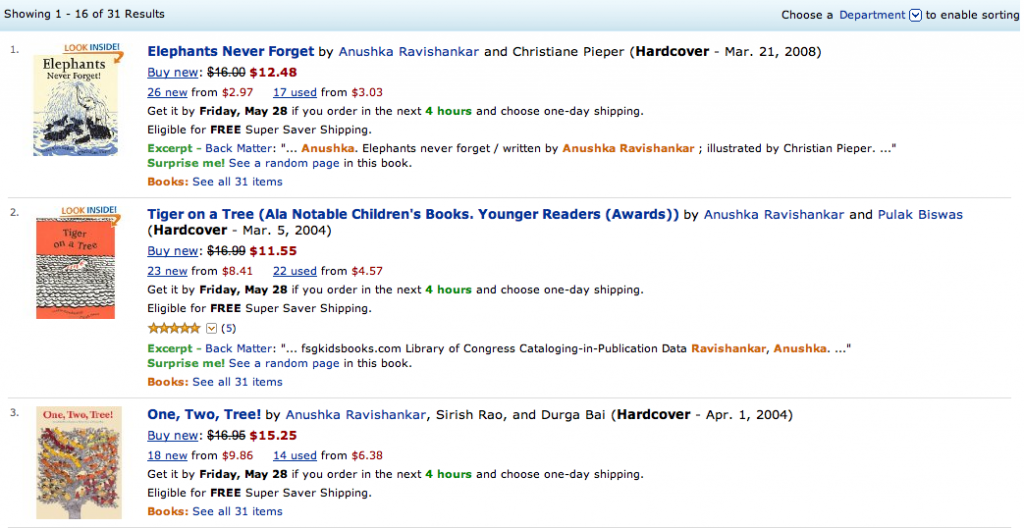
Guess The Book(s)
Author: utbt26 May 2010
EDITED TO ADD CLUES.
Long time since we played this. So we have two pics.
Pic1: There are five books. Guess the names of the books.
Clue1: All are children’s books. Target age group 3+ – 8.
Clue2: If you have been following book publishers blogs, it is easy to pick out the cover art.
Pic2: This is the book I am reading currently.
Clue1: Young adult book, but……I read it anyway. So deal with it.
Clue2: It is Newbery Medal award winner.
Rules:
Quiz closes by May 28, 5.30PM PST.
Results will be out May 31, 4.00AM PST
The first person to get all the 6 books right before May 28, 5.30PM PST wins.
The reward is a big round of applause. Currently very affordable 🙂
The books are as follows.
Pic1: Assuming I have sorted out my left-right confusion,
Top right: The Rumour by Anushka Ravishankar, Illustrations by Kanyiki Kini, Published by Karadi Tales
Bottom left: When The Earth Lost It’s Shapes by Shobha Viswanath, Illustrations Chistine Kastl, Published by Karadi Tales
Bottom right: The Lizard’s Tail by Shobha Viswanath, Illustrations by Christine Kastl, Published by Karadi Tales
Left middle: All About Nothing, Concept and Art by Nina Sabnani, Written by Deepa Nayar, Published by Tulika
Pic2: A Wrinkle In Time by Madeleine L’Engle
Such a vision in 1962!! Amazing!! Planet Camazotz and IT reminded me of certain shades of 1984 by George Orwell. Considering that 1984 was published in 1949, it must have certainly influenced L’Engle. But Wrinkle In Time has a happy ending, unlike 1984(*shudder*), and sends a strong message that love is the ultimate messiah.
A big hand to Sandhya and Kaapi for getting pic 2: A wrinkle In Time right. Good job guys. Sandhya, keen eye, you picked out the Karadi Tales title from my bookshelf.
Myths
Author: utbt19 May 2010
Mythological stories have always had a strong hold on me since childhood. No meal was complete without my chithi narrating a mythological story(because I begged and whined till she gave in). No story was complete without my chithi repeating, “Sapitunde kelu”(translates to: Eat as you listen) because I was so transfixed that I needed constant reminders to chew. But, I have my reservations when it comes to introducing mythological stories to my children. This dilemma of mine was the fodder for my first blog post. If I had written the same post today, I would have cut down on certain frills and made the post crisp, but the underlying issue would still be the same. The dilemma still continues.
I think, to some extent, I keep comparing the way I grew up with the way my children are growing up and I am afraid that my children might perceive the mythological story out of context. Since most of our mythological stories are religious, I am afraid that my children might extrapolate the inconsistencies in the story, the imperfections in the character as inconsistencies in religion. Adult perceptions and their role in child rearing is a full fledged research topic!
Amar Chitra Katha will always have a special place in my heart. When I see an ACK, I get mental images of summer holidays, burning sun, cool shade, tender coconut water, nungu (palm kernel), mangoes – ripe and raw and nothing can beat this nostalgia. But in the context of my children, I think ACK is still too much of he killed his brother, he made his wife walk in fire, she threw her children in the river and such. I wanted something beyond ACK.
So, I started looking for books on mythology that I am comfortable reading at home and given that this truly is the golden period for kids-lit in India, I am finding some good books on this subject.
 |
Vyasa’s Mahabaratha
Author: Chitra Krishnan. Illustration: Arun Kumar Translation: Aasai |
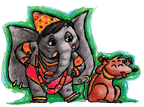 |
Have you seen Jackie Chan movies?! After the movie, the rolling credits invariably show scenes from the making of the movie. It shows the bloopers. Silly, but always puts a smile on my face. That is the same effect this book had on me.
Tulika’s Vyasa Mahabaratha is not Mahabaratha, but the events leading to the writing of the epic. Vyasa’s search for a scribe and how Vyasa and Ganesha entered in to an agreement is the crux of this book.
I ordered the tamil version of the book. The tamil used in this book is certainly not the spoken tamil, but what my tamil class students will call as, ‘news reader’ tamil. I read it for my children and have to make sure that I translate. When what they hear is different from what they read, it is tough for children to understand. So it was up to me to make it interesting.
The story is narrated in a fun, lively manner. The illustrations are cartoonish with a Dumbledore looking Vyasa and a ‘thinni pandaram’(translates to: glutton ) Ganesha. I loved it. My children are getting used to it.
 |
Hanuman’s Ramayana
Author: Devdutt Pattanaik Illustrator: Nancy Raj Translation: Shankarramasubramaniyan |
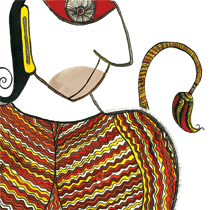 |
Mythology is considered as a symbolism. Myths were originally passed on through the tradition of oral story telling. In the days of yore, story telling was a form of entertainment. Story telling, I am sure, was cause of much excitement, celebration and was often associated with a religious occasion. Tulika’s Sweet And Salty talks about how the people in the village of Narasannapeta get excited when the story teller Gorannagaru visits to tell the story of Ramayana.
Hanuman’s Ramayana is not the story of Rama, but tells the readers that mythological stories might have different versions and the possibility of stories getting lost over time. I have personally heard two versions of Ramayana, one in which Ravana is the cruel villain and one in which he is Sita’s original father and took Sita captive for the good of the divine couple.
Basic things that I took away from this book is that a story can be molded to suit the ideas of the story teller. It changes and flows with the interpretation of the narrater. The story is bigger than the teller. It is not the who but the how and what that matters.
Nancy Raj’s illustrations are in Madhubani style. Lovely, intricate and in beautiful colors. We have three Tulika books illustrated by Nancy Raj(Village Fair, A-vil Yirundhu Ak-varai and Hanuman’s Ramayana) and each has its own style to suit the nature of the story. The concept of Hanuman’s Ramayana – ‘what is important is the story, not the story teller’. Nancy’s concept seems to be, ‘what is important is the art that compliments the story, not the artist’ and as a result the illustrations shine through.
 |
Ramayana The Divine Loophole
Author/Illustrator: Sanjay Patel |
 |
How can I talk about Ramayana and not talk about this book?! The key attraction for our family in this book are the illustrations. Sanjay Patel has used vector point illustrations to translate his sketches in to digital format using adobe illustrator. Four years of hard work, each page taking approximately seven days to finish and the result is this vibrant 185 page eye candy. I literally drooled. I have never see Ramyana illustrated like this before. Considering that this book came at the time, I was struggling to translate some of my sketches in to digital format using illustrator and photoshop and was throughly frustrated with the result, my respect for the book doubled. And of course, Sanjay Patel saying that Rama kneeled before Sita’s feet asking her forgiveness for having suspected her faithfulness and the authors note that ‘Times have changed, as have customs, but love has always been complicated’ agreed well with me 🙂
The tone of the book is very casual and the target audience is definitely the ‘non-hindu but is curious about the monkey god and such’ category. So if you are seeking deep spiritual advice and an insight in to hinduism then you are barking up the wrong tree.
Both my daughters love looking at the pictures in this book. They can sit for a good hour, just turning the glossy pages, absorbing the pictures.
My only gripe is about the illustration of Ravana. In order to make him symmetrical Sanjay Patel took poetic license and shows only nine heads. Like Maniratnam’s Ravan would say, he is ‘Das sir wale’ and not ‘Nao sir wale’ 🙁
A Page From Our Lives
Author: utbt17 May 2010
Dear Mieja:
I have never written public blog letters to you and your sister. I had my reasons. Now, Mieja, this is my letter to you. My first public, blog letter to you. I have my reasons.
If I ever write your biography, the chapter that covers 3.5 years – 4 years of your life will certainly be titled HEART ACHE. To call the past six months as turbulent will be an understatement.
Your motto has always been Vini Vidi Vici – you came, you saw us all and you conquered us all with your laugh, love, expression and attitude. You make me laugh like there is no tomorrow. When I hug you, I feel this sense of contentment swell inside of me. You have multiple facets, all of which I enjoy. Heck, I enjoy even your ‘padagamani'( adamant and aggressive ) side. You have always gone by ‘naan oru mudivu pannital, appuram nane yen pechai ketka maten’ (Translates to: If I decide something, then I will not listen to me convincing myself to change my decision.) and in the past I have found it awfully cute. The thought that this child is my last child softens parents in many ways. It is an abstract feeling that can only be experienced and cannot be explained.
Any thing goes is definitely not what flies in our house. Your appa and I believe that discipline is not a dirty word. We view it more as setting safe limits within which you and your akka can explore. It will be false to say that we do not have any expectations on you and your akka. Though the two of you are young, we do have expectations, age appropriate expectations on you both. We are not new, inexperienced parents any more. Tantrums neither scare us nor embarrass us. We are level headed to view it as mismatched expectations and are willing to work through it.
Now, something happened. Or may be many things happened….. I am not sure, but I can only make educated guesses. May be you moved from what Dr.Montessori would call ‘just existing’ to ‘conscious existence’. May be you are trying to learn your limits by pushing our limits. May be you delicate digestive system is still in the process of maturing and you are suffering from the same lactose intolerance and acid reflux that made you scream in pain 24X7 the first two weeks after you were born. May be you are trying to define your niche in house and in school. May be you are trying to run with the top dogs too soon. May be you are competing with your sister. May be you are competing with your self. May be you found that by screaming you get my attention sooner that anything else and decided to take that short cut. May be you are feeling insecure…..
As a result of this, the past six months have been non stop crying and plain unhappiness – mostly for you. What shocked me was the rage, the anger that emanated from you and that you blamed me for your unhappiness. It was not just me, but your teachers also noticed it. What started as hugging my legs and refusing to say goodbye to me when I drop you off in your classroom, only worsened over the past three months. You regressed in certain areas I thought you had already mastered. Your teachers were surprised that you were having separation anxiety after being in same classroom, with the same teachers for the past two years.
We had a conference and discussed certain things that have been sending red flags right, left and center in my mind. Most of the red flags, your teachers said, were ‘preferences’. Strong, rigid and to some extent eccentric, but they did put my mind to ease by saying that there is no cognitive dissonance.
The real slap in the face came to me, when the head teacher of your classroom, the director of your school, a very patient, kind and nurturing soul called me aside and gave me ‘the note’. After an unhappy good bye in the morning, you were sitting with your teacher and she made conversation with you. After long probing you told her that you were MAD at me. Your teacher suggested that you write a letter to me. You dictated. She wrote. And I am holding the note that says, “To mommy, Mommy, I am having fights with you. That makes me sad.” Slap. End of story.
Since then, I have been trying to get a break. One thing I strongly believe is that, when you are desperate for something, the universe conspires to give you exactly what you ask for. It may not be packaged in the way we want it. But you get it. The challenge is to recognize it and make the most of it.
The break I have been asking for came as a real break…. in my tail bone. I fell on the stairs and broke my tail bone. The positive aspect of it is that I get to stay at home and spend some time with you. Real, quality time that is not measure in minutes but in love. I am able to slow down and give you the focus you need without cutting down on the time I spend with your sister.
You will be four in a week. Hoping that the chapter about your fourth year will be titled CONTENTMENT.
More love than you can ever imagine
Amma
The Snow King’s Daughter
Author: utbt12 May 2010
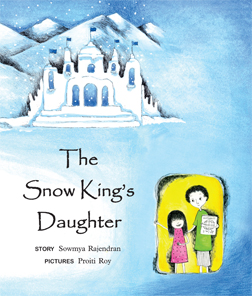 |
The Tulika kaka flew tirelessly over the Pacific Ocean, all the way from Chennai, India to San Jose, CA with one mission. The mission is not migration, but to deliver to me my copy of Tulika’s The Snow King’s Daughter in appreciation of my participation in the Tulika blogathon. Thanks Tulika.
Please find my review of the book at Saffron Tree. |
Poetry
Author: utbt3 May 2010
I reckon that national poetry month just got over. I had been meaning to add my two cents….but better late than never. So here it goes.
Let us play word association. What comes to your mind when you say poetry? This is what comes to my mind:
Glum. Melancholy. Daffodils. Sad. Rote. Wordsworth. Memorize. Exams. Marks. Simile. Metaphor. Hate. Struggle. Depth. Inadequacy. Puzzled. With-reference-to-context. Robert Frost. Complex. Forgetting-and-leaving-a-space-hoping-that-the-word-would-come-to-mind-before-the-exam-bell-rings. Mnemonic.
I know I am not doing justice to the genre of poetry. Especially when early childhood education has nothing but good things to say about poetry and its benefits in language development in young children. I feel that my poetry learning was associated with probing to check for understanding rather than focusing on exposing the beauty of the language and it soured my experience.
I am reading some poetry with my children and at school. From my observations, I feel that poems with a strong cadence are a huge hit with all children. So far I am yet to come across anything that beats Mother Goose in its strong rhythm and cadence. Some of the content in Mother Goose, I feel, is culturally irrelevant, sexist and makes my eyes roll, but I must also say that it is the adult perspective. Children are oblivious to it and are mesmerized. Also from my observations, at around four years children start enjoying nonsense verses. The next in the natural progression is enjoying poems with clever word play. At home we are heavily in to nonsense verses and considering that it the highest level I will ever reach in poetry, we shall remain at that stage for a long time 🙂
I am sharing some poems that we like at home
My Name Is… By Pauline Clarke
Book: The 20-th Century Children’s Poetry Treasury
Selected by Jack Prelutsky. Illustrated by Meilo So
Additional Information: I sing it to the tune of “My name is Madhavi, I am from Allepey” (Karadi Tales)
My name is Sluggery-wuggery
My name is Worms-for-tea
My name is Swallow-the-table-leg
My name is Drink-the-Sea.
My name is I-eat-saucepans
My name is I-like-snails
My name is Grand-piano-George
My name is I-ride-whales.
My name is Jump-the-chimney
My name is Bite-my-knee
My name is Jiggery-pokery
And Riddle-me-ree, and ME.
Eletelephony by Laura E.Richards
Book: The 20-th Century Children’s Poetry Treasury
Selected by Jack Prelutsky. Illustrated by Meilo So
Additional Information: It so happened that Chula and Mieja’s teacher also read this poem at school. Need I say how thrilled they were?!
Once there was an elephant,
Who tried to use a telephant-
No! no! I mean an elephone
Who tried to use the telephone-
(Dear me! I am not certain quite
That even now I’ve got it right.)
Howe’er it was, he got his trunk
Entangled in the telephunk;
The more he tried to get it free,
The louder buzzed the telephee-
(I fear I’d better drop the song
Of elephop and telephong!)
From school: The primary teachers do a cool circle time game in which they sing, “Willaby Wallaby BAY, an elephant sat on JAY. Willaby wallaby BACK, an elephant sat on JACK”. The idea is to rhyme a nonsense word with a child’s name. Once the kids are familiar with this routine, they sing, “Willaby wallaby MALICE, an elephant sat on______”, they pause and the children chorus “ALICE” – they pick a child’s name that rhymes with ‘malice”. If the children are rained in, they are sure to play this game, it keeps them engaged for a long time.
Book: Gasa Gasa Para Para Author: Jeeva Ragunath. Illustrator: Ashok Rajagopalan
Book: A-vil yirundhu Ak varai Author: Jeeva Ragunath. Illustrator: Nancy Raj
Publisher: Tulika
Alliterations, onomatopoeia, funny alphabet pictures, nonsense verses. What is not to like in these books?!
A-vil yirudnhu is about the vowels.
Gasa Gasa Para Para focuses on the consonants and the letters emerging when combined with the vowels. My children like to look at the books and identify the tamil alphabets.
They
Author: utbt28 Apr 2010
Chula: They giggle.
Mieja: For what?
C: Nothing. All they do is giggle all the time. They just do that.
M: Really? How do you know?
C: R told me. She knows everything about them.
M: What else?
C: They have metal on their teeth.
M: Really?! How do they eat?
C: They don’t. They drink soda, eat ice cream, eat chocolate and starve. Then they giggle.
They = Teenagers.
Discussion between Chula and Mieja at the breakfast table.
Over heard by yours truly.





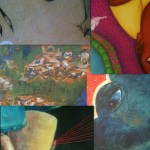
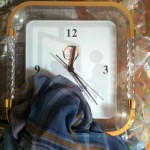
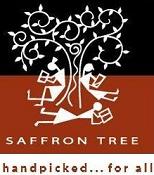
Recent Comments